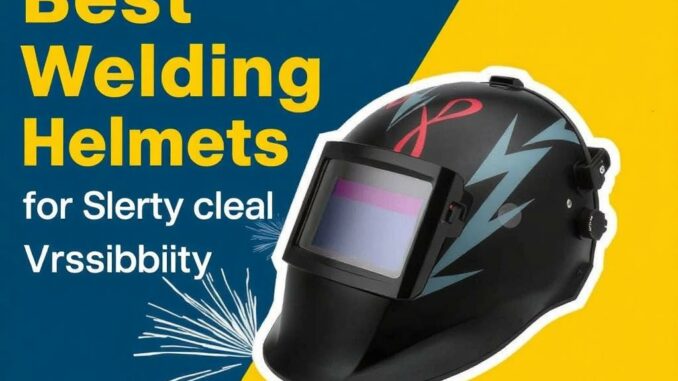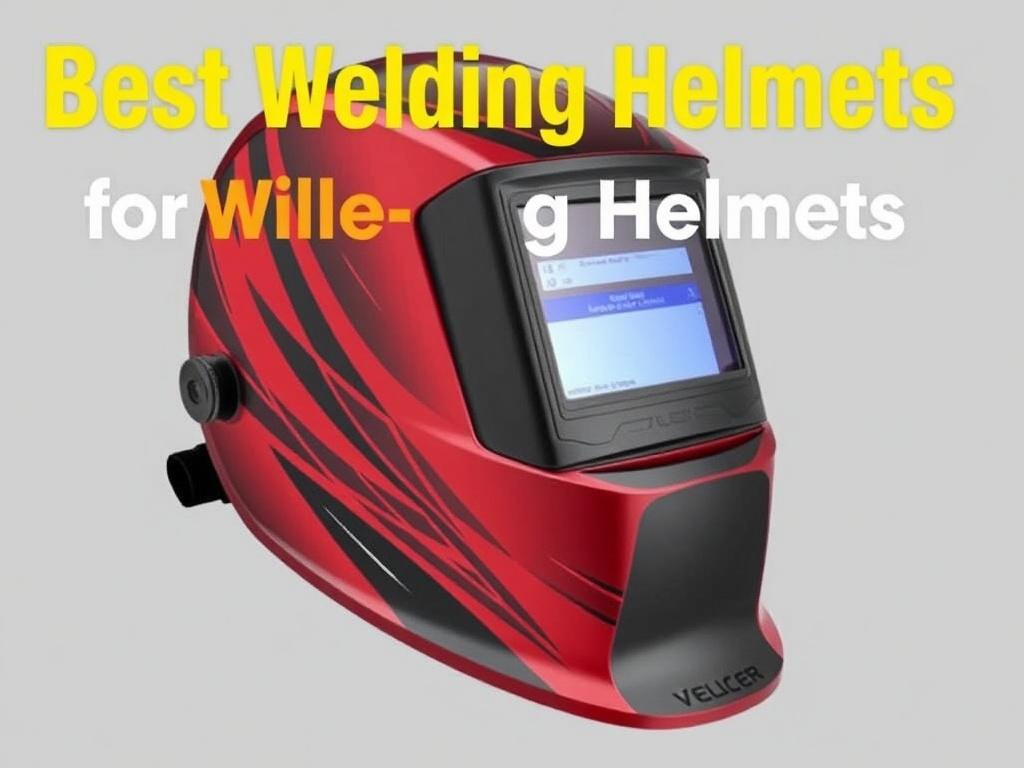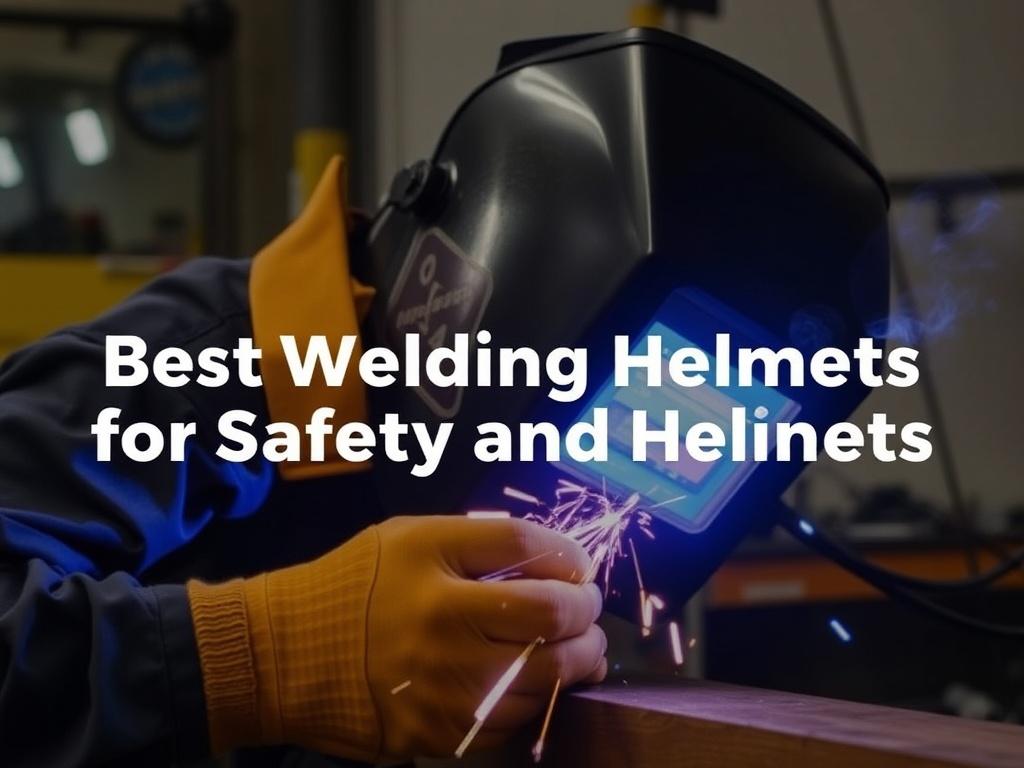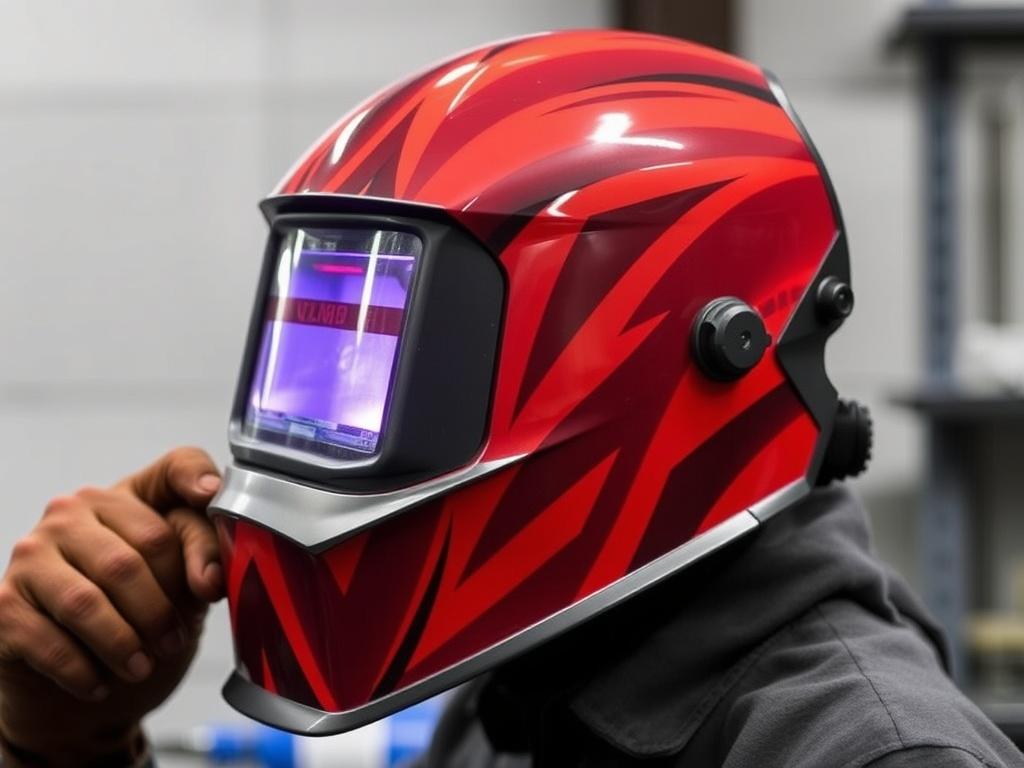
Welding is an art form that combines precision, skill, and safety. Whether you are a seasoned professional or a passionate hobbyist, one of the most critical pieces of equipment you need is a reliable welding helmet. A **welding helmet** does more than just protect your eyes; it ensures your overall safety by shielding your face and neck from sparks, harmful UV and infrared rays, and debris. But with so many options on the market, how do you choose the best welding helmets for safety and visibility? This comprehensive guide will walk you through the essentials of what to look for in a helmet, explain why safety and visibility are non-negotiable, and review some of the top welding helmets available today.
Why Welding Helmets Are Essential for Safety
Before jumping into specific models, let’s understand why a welding helmet is indispensable. Welding exposes your eyes and skin to intense light, heat, and flying sparks. Without proper protection, you risk arc eye (welder’s flash), burns, and long-term eye damage. The correct welding helmet acts as your first line of defense.
The best welding helmets for safety have several vital features:
- Auto-darkening filters (ADF): These filters automatically adjust the shade based on the arc intensity, meaning you don’t need to flip your helmet up and down manually.
- UV and Infrared Protection: Even when the helmet’s lens isn’t darkened, it blocks harmful radiation to protect your eyes.
- Durability: Helmets must withstand heat, sparks, and impacts without breaking down.
- Comfort and Fit: An uncomfortable helmet can distract and fatigue you, which compromises safety during long work sessions.
With these points in mind, let’s dive deeper into the specific features that tie safety and visibility together.
Visibility: A Key Factor in Welding Helmet Choice
Good visibility means stronger precision and better quality work. The best welding helmets provide a clear, true view of the welding area while protecting the eye from brightness and harmful rays. In reality, finding the perfect balance between protection and clear vision is the holy grail for any welder.
Key visibility features to watch for include:
Lens Size and Viewing Area
The larger the lens viewing area, the more you can see without moving your head frequently, reducing fatigue and increasing accuracy. However, some larger lenses may add weight to the helmet, so it’s about finding the right balance.
Optical Clarity Ratings
Not all lenses are created equal. Optical clarity is rated on a scale from 1 to 3, with 1 being the best. The best welding helmets often feature lenses rated 1/1/1/1, indicating no distortion across all categories (optical clarity, diffusion of light, variation in luminous transmittance, and angular dependence).
| Optical Quality Category | Rating Scale | Description |
|---|---|---|
| Optical Clarity | 1 (best) to 3 | How clear the lens is. |
| Diffusion of Light | 1 (best) to 3 | How much the light spreads on the lens. |
| Variation in Luminous Transmittance | 1 (best) to 3 | Consistency of light transmission. |
| Angular Dependence | 1 (best) to 3 | Clarity maintained at different angles. |
Color Accuracy
The light passing through the welding lens should not distort the colors of the workpiece or surroundings excessively. This helps welders assess their work better and spot defects early.
Auto-Darkening vs. Passive Welding Helmets
The best welding helmets for safety and visibility are often auto-darkening. But it’s essential to understand the difference between auto-darkening and passive helmets.
Passive Helmets
These feature a fixed, darkened lens, often Shade 10, which means you must flip the helmet up and down manually between welds. While passive helmets tend to be lighter and cheaper, they offer less convenience and can slow down work.
Auto-Darkening Helmets
Auto-darkening helmets, on the other hand, contain sensors that detect the welding arc’s brightness and adjust the lens shade accordingly, often within milliseconds. This helps maintain safety without compromising visibility or smooth workflow, especially for TIG welding or frequent arc starts.
| Helmet Type | Pros | Cons |
|---|---|---|
| Passive Welding Helmet | Lightweight, affordable, simpler design | Requires manual flipping, less convenient, limited lens shade options |
| Auto-Darkening Welding Helmet | Convenient, adjusts shade automatically, better visibility, suited for multi-process welding | Typically heavier, more expensive, battery-powered |
Key Features to Consider When Choosing the Best Welding Helmet
There is a multitude of helmets on the market, each boasting unique features. Here are essential considerations to help you narrow down your choices.
1. Lens Shade Range
The shade number tells you how dark the lens becomes. Different welding applications require varying shade levels, with a typical auto-darkening helmet offering a range from 9 to 13 or above. For example, TIG welding usually needs lighter shades compared to MIG or Stick welding.
2. Reaction Time
This is how quickly the lens darkens after the arc strikes. The best helmets react in 1/25,000th of a second or faster, ensuring your eyes are always protected.
3. Sensitivity and Delay Controls
Sensitivity controls adjust how easily the lens darkens, useful when working outdoors or in demanding light conditions. Delay controls determine how long the lens stays dark after the arc ends.
4. Power Source
Most helmets use replaceable batteries, rechargeable batteries, or solar power. Solar-powered helmets can offer longer life but require light to charge, while batteries provide consistent performance without sunlight dependency.
5. Helmet Weight and Comfort Features
Consider helmets with padded sweatbands, adjustable headgear, and balanced weight distribution to reduce fatigue during long shifts.
Top Welding Helmets on the Market for Safety and Visibility

Now that we’ve covered what to look for, let’s explore some of the best welding helmets renowned for their exceptional safety features and visibility.
1. Lincoln Electric Viking 3350
The Lincoln Electric Viking 3350 is often praised as one of the best welding helmets for safety and visibility due to its large viewing area and crystal-clear optics. The helmet features:
- 1/1/1/1 optical clarity rating
- Variable shade range of 5-13
- Adjustable sensitivity and delay controls
- Comfortable, adjustable headgear
- Solar power with replaceable battery backup
This helmet is suitable for MIG, TIG, and Stick welding and is a favorite among professionals who demand high visibility.
2. 3M Speedglas 9100
The 3M Speedglas 9100 is another top choice in the category of welders looking for premium protection paired with advanced visibility. Features include:
- Large viewing area with 1/1/1/2 optical clarity
- Four arc sensors for reliable auto-darkening
- Adjustable shade 8-12 external control
- Comfort-fit design with good ventilation
- Lightweight for all-day use
The 9100 series is regarded as one of the safest helmets thanks to its well-rounded protection and cutting-edge design.
3. Antra AH6-260-0000
For welders on a budget, the Antra AH6-260-0000 offers great performance without breaking the bank. Key features include:
- Auto-darkening with variable shade 9-13
- Decent 3/3/3/3 optical clarity
- Lightweight and comfortable design
- Fast reaction time of 1/25,000 seconds
- Solar-powered with battery backup
It’s a reliable helmet for hobbyists and entry-level welders who still want safety and decent visibility.
Maintenance Tips to Keep Your Welding Helmet in Top Condition

Owning one of the best welding helmets for safety and visibility isn’t enough; maintenance plays a huge role in ensuring ongoing protection and clear vision. Follow these tips to keep your helmet performing like new:
- Clean the lens regularly: Use a soft cloth and lens cleaning spray to remove dirt and fingerprints that might distort your view.
- Replace protective lens covers: These cover the main lens and take the burn marks and scratches during welding.
- Check and replace batteries: Auto-darkening helmets depend heavily on their power source.
- Inspect helmet for cracks and damage: Cracks can compromise protection; replace any damaged parts immediately.
- Store in a dry, cool place: Keeping the helmet out of extreme heat and moisture prolongs its lifespan.
How to Properly Use Your Welding Helmet for Maximum Safety and Visibility

Just having a great helmet isn’t enough — correct usage determines how well it protects you on the job. Here are some practical tips:
- Always wear your helmet before striking the arc: Never risk exposing your eyes to the welding light.
- Adjust the helmet fit: It should feel snug but comfortable to avoid slipping or distractions.
- Keep the lens clean: A clear lens offers the best visibility and safety.
- Use appropriate shade levels: Match the shade to the welding process to protect and see clearly.
- Use additional protection when necessary: In high-risk environments, wear flame-resistant clothing, gloves, and ear protection together with your helmet.
Frequently Asked Questions About Welding Helmets
Can I use one helmet for different types of welding?
Yes, many best welding helmets offer adjustable shade ranges suitable for various welding processes like MIG, TIG, Stick, and plasma cutting. Always check the helmet’s specifications to ensure compatibility.
How often should I replace my welding helmet?
Helmets can last many years with proper care. However, replace your helmet if there are cracks, significant lens scratches that obscure vision, or if the auto-darkening feature fails.
Is an auto-darkening helmet better than a passive helmet?
For most welders, yes. Auto-darkening helmets offer better convenience, protection, and productivity. However, passive helmets may still be preferred in some budget or specialty situations.
Conclusion: Invest in the Best Welding Helmets for Safety and Visibility
Choosing the best welding helmets for safety and visibility is a decision that impacts your health, efficiency, and work quality immensely. By understanding the critical features like lens quality, serviceability, helmet comfort, and auto-darkening capabilities, you can confidently pick a helmet that meets your needs.
Whether you invest in a premium model like the Lincoln Electric Viking 3350 or a budget-friendly option like the Antra AH6-260-0000, make sure your helmet provides excellent protection and visibility. Remember, the right welding helmet is not just equipment — it’s an investment in your safety and your craft.
Stay safe, weld smart, and keep your vision clear!
